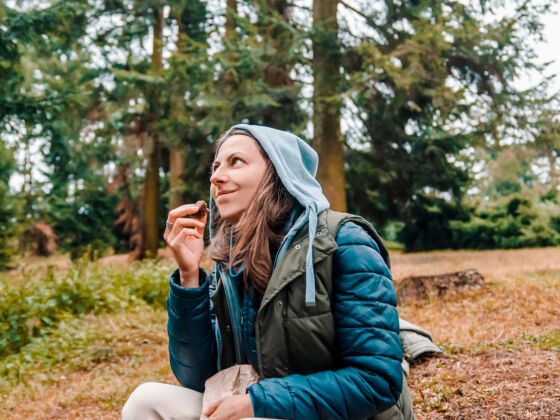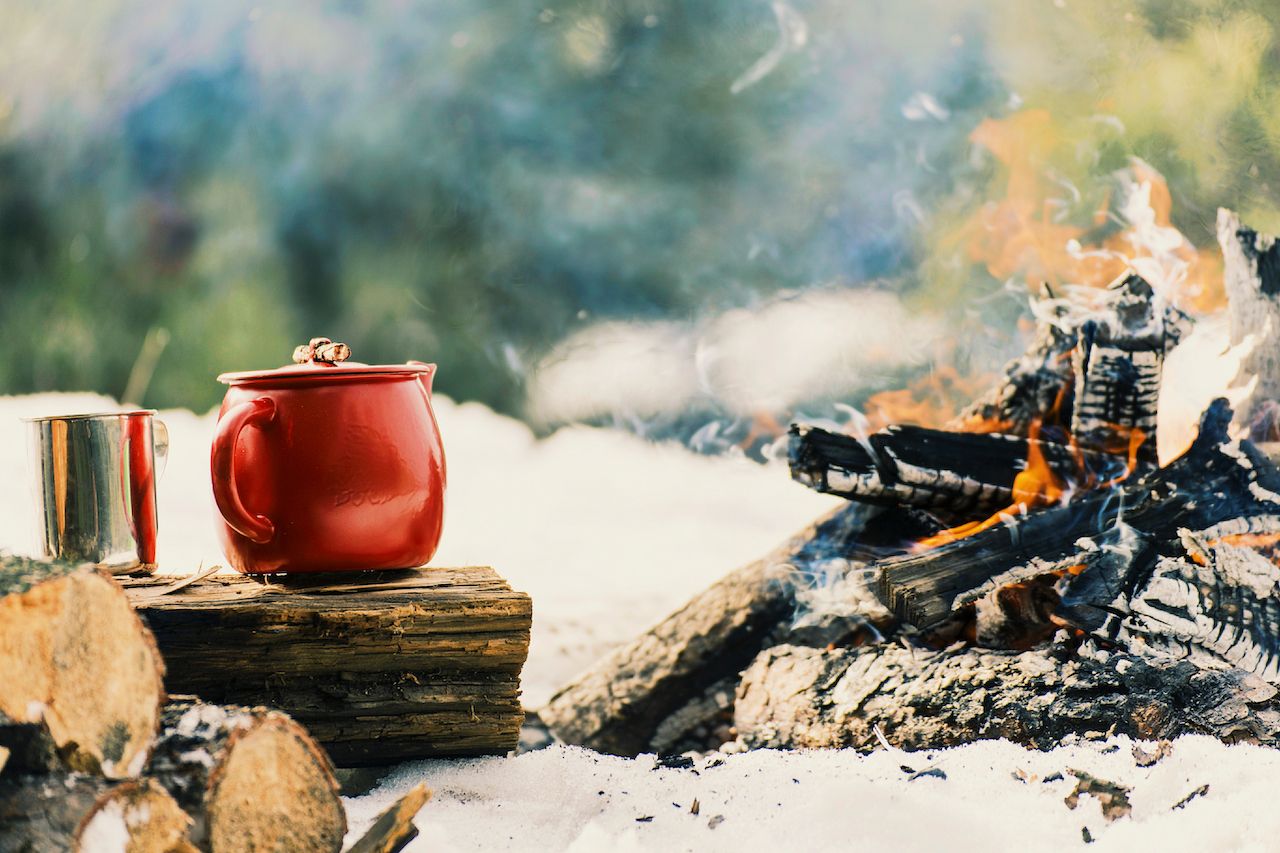If you are headed outdoors and want some plant-based nutrition to fuel your adventures, you no longer need to settle for that bag of granola or a few fingerfuls of dried fruit. You can and should eat well outside, because part of the fun of burning calories in the outdoors is refueling the tanks with tasty provisions. Try these vegan energy snacks and outdoor meal options to keep charged and healthy while hiking, camping, biking, or otherwise on-the-go.

The Best Vegan Energy Snacks and Meals for Outdoor Adventuring
For day hikes, bike rides, and basic single-day excursions
When departing on a day hike or bike ride, the key to success is quick power. You need foods that will provide a boost in energy and much-needed calories while leaving you feeling loose and ready instead of lethargic and bloated. This starts with quick-grab items that should be kept in your backpack at all times, like Vega Protein Bars and Clif Bars. Get in the habit of keeping a box of one or the other in your kitchen and re-stocking your pack post-excursion. Evo makes a great hemp protein bar that’s kind of like eating a cookie but that a dietitian will actually approve of, with 12 grams of protein in each bar.
Trail mix is another source of quick energy with the benefit of not being “processed” into a bar, making it slightly more natural in most cases. However, if you’re on a bike, it’s harder to eat loose foods like almonds with one hand, so they’ll require a dedicated stop. If you do opt for trail mix, aim for a mix that’s high on nuts and dried fruit, and lower on the processed carbs — since, as delicious as bagel chips are, they don’t provide the energy boost.
If you want the energy of trail mix in a form that’s easier to eat quickly, you can make almond energy balls at home. You’ll find plenty of recipes online, but they are ridiculously easy to make. Just mix together almond butter with healthy items like chia seeds, flax meal, and/or oats; toss in some vegan dark chocolate chips; sweeten it all with maple syrup or chopped dates; and then roll them into bite-sized balls. You can even cover them in shredded coconut, if you want.
For a savory snack on your shorter excursions, try vegan jerky, which are built from vegan proteins like tempeh. Some specialty food and nutrition shops sell Louisville Vegan Jerky, or you can buy it online. No matter how you get it, keep a bag in your pack or in your kitchen, and grab a few pieces to go before heading out.
Back at home, make a protein shake with one of the many vegan protein powders available at nutrition stores, natural grocery stores, or online. Garden of Life Plant-Based Protein Powder mixes easily with water and contains 30 grams of protein designed to help your body recover from strenuous exercise. If you need an entire meal in shake form, try Ka’Chava, which includes all of the necessary proteins and carbs to keep you moving.
For long bike rides, backpacking, and overnight trips

Photo: anusorn thongpasan/Shutterstock
For day-long bike rides or overnight backpacking/bikepacking trips, you’re going to need at least a couple of full meals in addition to the snacks listed above. Refueling after extended exercise is especially important when you’re headed back out the following morning, so don’t be shy about cooking up a feast at your campsite. Patagonia Provisions has vegan options that boil over a fire or gas burner, as do other campfire food products available at your local REI or outdoor provisions retailer.
On days of extended exercise, maintaining carbohydrate energy — known as glycogen — is critical to success. Your body stores enough for an hour or two of moderate to heavy endurance, and after that, it begins to burn fat as an energy source. Fat metabolizes slowly, which doesn’t work as well with exercise; as we’ve noted already, rapid energy is key. The solution to this is energy gels, a quick and easy to pack go-to of which there are numerous vegan options. Vega Sport and Clif Bar make vegan energy gels, as does GU Energy. Stock enough that you can consume one per every hour of heavy exercise, or every two to three hours of moderate exercise.
But there’s no need to rely solely on packaged meals, especially if you’re backpacking with a gas burner and some simple camp cookware. If you have a pot, water, and a few basic ingredients, you can whip up a gourmet camping meal in less time than it takes to down a bottle of kombucha. Bagged whole wheat spaghetti noodles fit nicely into backpacks as they’re long and skinny, and it doesn’t really matter if they snap. Pasta with red lentil sauce is easy to make and full of nutritious power (and it’s delicious), but any quick sauce you prefer and whole wheat noodles provide healthy carbs and calories, and you can kick up the protein content by adding your favorite veggie pattie, beans, or lentils.
Daal soup is an easy win as well, and you can get packaged varieties at your local grocer or order online. For this and other hearty soups, look for options that aren’t condensed, i.e. you won’t need to add water, and that don’t require cold storage prior to opening.
Winter sports and cold weather solutions

Photo: Vitalii Nesterchuk/Shutterstock
Warm meals beckon when the snow falls. This is true whether you’re heading out for a couple of hours on the snowshoes or winter camping — though if you are camping, be sure to bring the burner and a pot because hot meals are essential. And you’ll also need snacks easy to grab with those mittens on if you’re skiing or snowshoeing. Keep peanut butter on hand for on-the-go munchies, whether that be a PB&J, trail mix, or in bar form, as well as other high-calorie, high reward snacks like dried fruits and plant-based protein bars.
Noodle dishes go well with cold weather camping, and you can channel warmer climates by cooking Udon noodles with tofu and veggies, tossed in tamari or your favorite salty sauce from further east. Dehydrated bean dip or hummus works well for campsite appetizers. In the morning, packaged oatmeal heats up quickly and doesn’t take much room in the gear setup.
And here’s the kicker: whether you’re at a campsite or back in the comfort of your kitchen, top off the day with vegan hot chocolate. It can be as simple as a trip to the grocery store for a package of non-dairy Swiss Miss or as gourmet as crafting your own cup from vegan cocoa powder. If you’re truly hardcore and down for some experimentation, you can even melt some dark chocolate in water and/or your favorite nut milk on the camp stove, and indulge Oaxaca style. Share a sip of this deliciousness with your crew and they may never go back to cow-milk-based hot chocolate again.